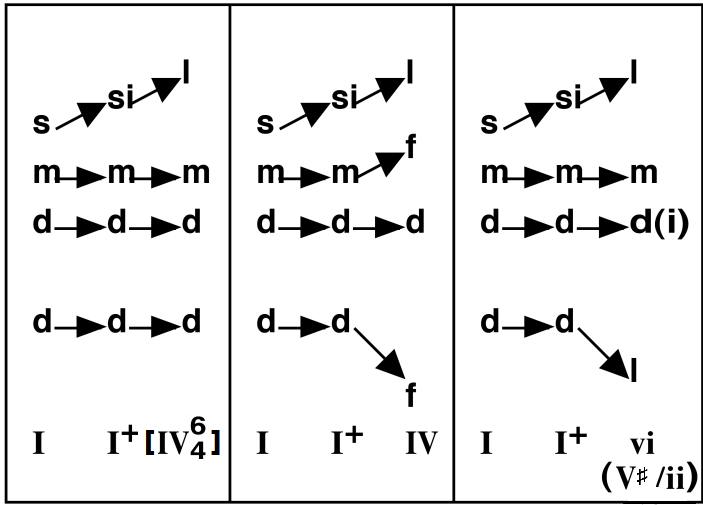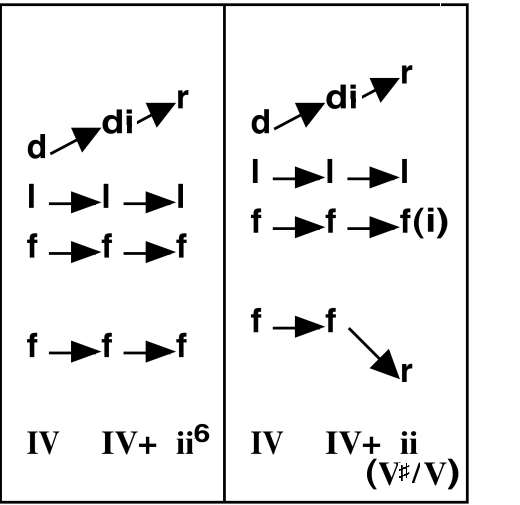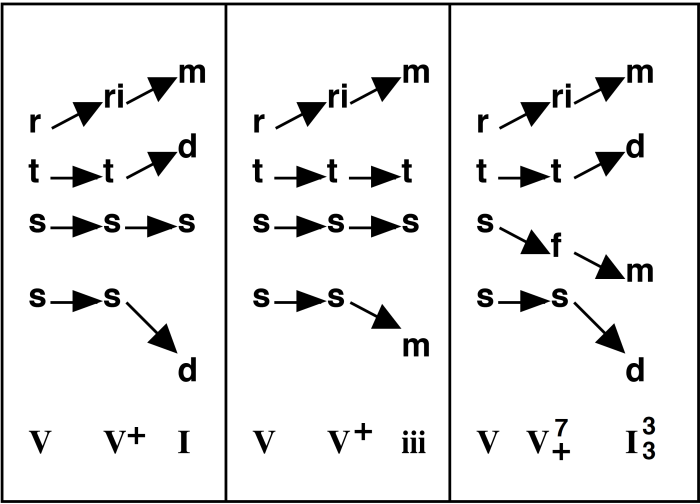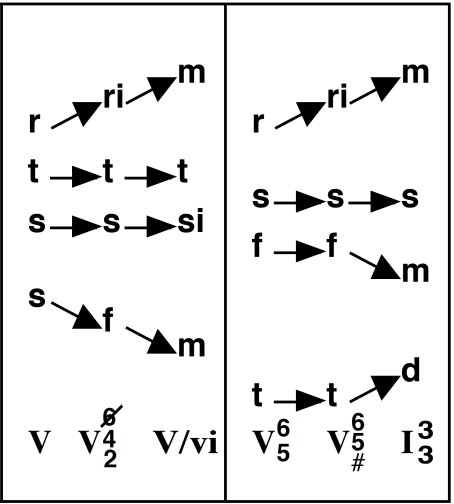23 Augmented Triads and the Augmented Dominant Seventh Chord
The augmented chords in major are:
- I+ (sometimes written as I
 5)
5) - IV+ (IV
 5)
5) - V+ (V
 5)
5) - V
 (V7(
(V7( 5))
5)) - Also possible, but less common, are Imaj7(
 5) and IVmaj7(
5) and IVmaj7( 5)
5)
The III+ chord occurs in minor keys.
These chords are the result of chromatic passing tones. The raised 5th acts like a temporary leading tone, lending these chords a dominant or secondary dominant quality.
The I+ triad in major
The chromatic passing tone si acts as a temporary leading tone, connecting I to either IV (and its inversions), vi(6), or V/ii (so – si – la).
The last two examples show the I+ with an added 7th in the bass and an altered version turning the I+ chord into a secondary dominant of vi that resolves to a secondary dominant.
The IV+ triad in major
The chromatic passing tone di acts as a temporary leading tone, connecting IV to either ii(6) or V/V (do – di – re).
The V+ triad and V chord in major
chord in major
The chromatic passing tone ri acts as a temporary leading tone to either I (and its inversions), I![]() , iii(6), or V/vi. Note that iii can be altered to create a secondary dominant of vi.
, iii(6), or V/vi. Note that iii can be altered to create a secondary dominant of vi.
The next two examples are especially colorful due to the dissonances ti, ri, and fa that all require strict resolution.
the III+ triad in minor
The III+ to VI secondary triad connection is available in harmonic minor. Note that the progression is identical to I+ to IV in major.
As mentioned in the chapter on Secondary Triads in First Inversion, the III+ chord can be used in minor as a substitute for the [ i ![]() ] chord leading to V
] chord leading to V![]() or V7.
or V7.
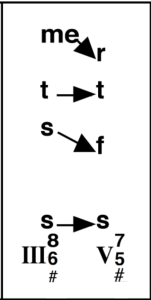
Practice
